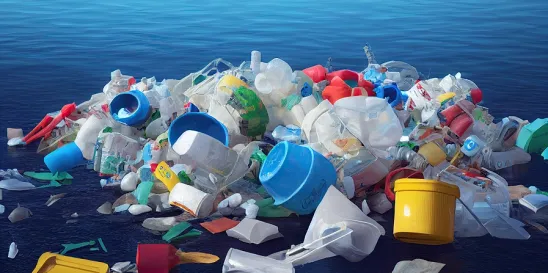On December 1, 2023, the International Agency For Research On Cancer (IARC) released its findings with respect to the carcinogenicity of PFOA and PFOS, which was the result of a conference held in Lyon, France in November 2023. IARC found that PFOA is “carcinogenic” to humans, while PFOS is “possibly carcinogenic” to humans. The IARC PFAS conclusions, while likely not surprising to many, will have significant impacts on PFAS litigation in the United States – from PFAS medical monitoring claims to the upcoming AFFF MDL personal injury cases to the legal challenges we predict to EPA’s upcoming final rules on both drinking water and CERCLA designations.
PFAS and WHO
IARC is the cancer research arm of the World Health Organization (WHO) and it exists to coordinate and conduct research on the causes of human cancer and to develop strategies for cancer control. PFAS and WHO are two things that are not a new relationship, as the WHO has issued previously statements and recommendations on PFAS in the context of drinking water standards. Last year, we wrote regarding the WHO’s published findings and recommendations with respect to PFOA and PFOS in drinking water. Similarly, IARC itself previously examined the question of whether PFOA is carcinogenic to humans. Its findings were published in an IARC monograph in 2016 in which it found that PFOA is “possibly carcinogenic” to humans. However, since 2016, numerous studies have been published on the subject of PFOA, PFOS and carcinogenicity.
IARC PFAS Findings 2023
IARC examines various chemicals for their carcinogenicity and classifies them in one of four ways: Group 1 (carcinogenic to humans), Group 2A (probably carcinogenic to humans), Group 2B (possibly carcinogenic to humans) and Group 3 (not classifiable as to its carcinogenicity to humans). The IARC PFAS findings placed PFOA in Group 1 and PFOS in Group 2B.
With respect to PFOA, IARC found sufficient evidence for a causal connection to cancer in animals. In addition, IARC noted that while there is “limited evidence” with which to draw a connection between PFOA and testicular and renal cell cancer in humans, the evidence with respect to animal studies coupled with evidence of “epigenetic alterations” in humans supported the conclusion of PFOA as a carcinogen to humans.
With respect to PFOS, IARC classified the chemical as possibly carcinogenic to humans due to the same sort of epigentic alterations in humans noted with PFOA. However, IARC found “inadequate evidence for cancer in humans for PFOS…because, among the few available studies, positive findings were seen only sporadically and inconsistently for a few cancer sites (ie, testis, breast, and thyroid).”
Litigation Impact
IARC’s findings with respect to carcinogenicity are oftentimes very influential on the course of litigation in the United States. The most recent example of this came after IARC’s findings in 2015 with respect to glyphosate. IARC found that the chemical was a “probable carcinogen.” What followed shortly thereafter was an explosion of litigation against the manufacturer of Roundup weed killer (which utilized glyphosate).
IARC’s findings will likely have the most immediate impact on the AFFF litigation taking place in South Carolina on the MDL. The parties are in the process of selecting bellwether personal injury cases for trial in late 2024 o early 2025. At issue in those cases is whether certain types of PFAS, including PFOA and PFOS, can cause certain types of cancers in humans. IARC’s findings are likely to be cited to both sides in some fashion. For plaintiffs, the conclusions themselves are the headline for juries. However, defendants will likely present more in depth evidence, particularly with respect to IARC’s conclusions related to evidence directly linking PFOA and/or PFOS to cancer in humans. Since IARC’s findings are heavily based on animal studies and the epigentic changes both chemicals cause in humans, expert testimony is likely that will discuss the studies that IARC reviewed that showed a weak or non-existent connection to cancer specific to humans.
Similarly, these same arguments will play out in courtrooms nationwide in existing class action lawsuits alleging harms or fear of future harms from exposure to PFOA and / or PFOS. Of particular interest will be the impact that IARC’s findings have on medical monitoring claims, which seek damages not for actual harms to human health, but rather for the potential for harm in the future. There will be no uniform answer on how this issue plays out among various states, as states have adopted differing standards for medical monitoring, with some rejecting the claim entirely. In states that have traditionally not permitted claims for medical monitoring, the IARC findings may open the door for creative plaintiffs’ counsel to challenge the legal standard in the context of PFAS, particularly by citing to the IARC discussion on epigentic changes.
Finally, it is likely that the EPA sees the IARC findings as a “win” for it in the context of EPA’s recent proposed rules for drinking water standards and CERCLA designations for PFOA and PFOS. The IARC findings closely follow EPA’s own ultimate findings with respect to each chemical. When EPA’s final rules on drinking water and CERCLA are challenged (which we continue to believe that they will be), EPA will utilize the IARC findings in support of its regulations. This will not, however, be the penultimate issue in these litigations, as several other legal challenges are likely to be raised that do not relate to the IARC findings. Nevertheless, expect IARC’s conclusions to be cited by EPA in support of its regulatory actions.
Conclusion
For anyone involved in PFAS litigation in the United States, the IARC findings will influence PFAS litigation in the United States in significant ways.




 />i
/>i
